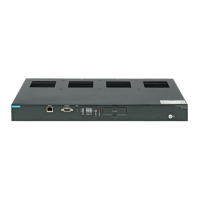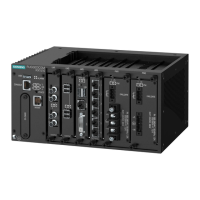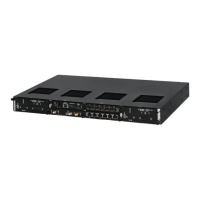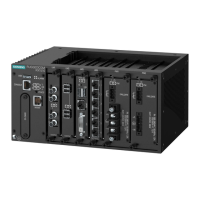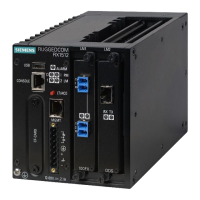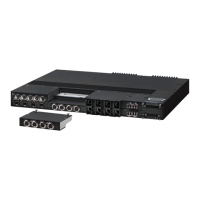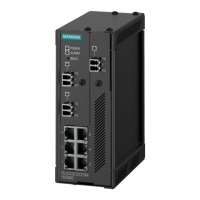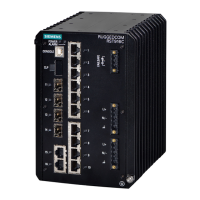Chapter 5
Setup and Configuration
RUGGEDCOM ROX II
User Guide
506 Managing OSPF
Parameter Description
Mode Synopsis: md5-rfc, md5-old-ripd, text, none
The authentication mode.
Key Chain The authentication key chain.
String The authentication string.
4. On the Interface Parameters form, configure the following parameter(s) as required:
Parameter Description
Passive Interface The specified interface is set to passive mode. In passive mode, all received packets are
processed normally and RIPd sends neither multicast nor unicast RIP packets except to
RIP neighbors specified with a neighbor element.
Receive Version Synopsis: 1, 2, 1,2, 2,1
The version of RIP packets that will be accepted on this interface. By default, version 1
and version 2 packets will be accepted.
Send Version Synopsis: 1, 2, 1,2, 2,1
The version of RIP to send packets with. By default, version 2 packets will be sent.
Split Horizon Synopsis: yes, no, poisoned-reverse
Default: yes
A split horizon.
5. Click Commit to save the changes or click Revert All to abort. A confirmation dialog box appears. Click OK
to proceed.
6. Click Exit Transaction or continue making changes.
Section 5.21
Managing OSPF
The Open Path Shortest First (OSPF) protocol determines the best path for routing IP traffic over a TCP/IP
network based on link cost and quality. Unlike static routing, OSPF takes link failures and other network topology
changes into account. OSPF also differs from RIP in that it provides less router to router update traffic.
The ROX II OSPF daemon (ospfd) is an RFC 2178 [http://tools.ietf.org/html/rfc2178] compliant implementation of
OSPF version 2. The daemon also adheres to the Opaque LSA (RFC 2370 [http://tools.ietf.org/html/rfc2370]) and
ABR-Types (RFC 3509 [http://tools.ietf.org/html/rfc3509]) extensions.
OSPF network design usually involves partitioning a network into a number of self-contained areas. The areas
are chosen to minimize intra-area router traffic, making more manageable and reducing the number of advertised
routes. Area numbers are assigned to each area. All routers in the area are known as Area routers. If traffic must
flow between two areas a router with links in each area is selected to be an Area Border router, and serves as a
gateway.
NOTE
The Router ID parameter defines the ID of the router. By default this is the highest IP assigned to the
router. It is recommended to configure this value manually to avoid the ID changing if interfaces are
added or deleted from the router. During elections for the master router, the ID is one of the values
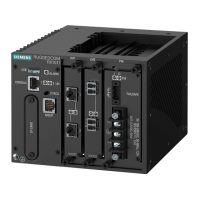
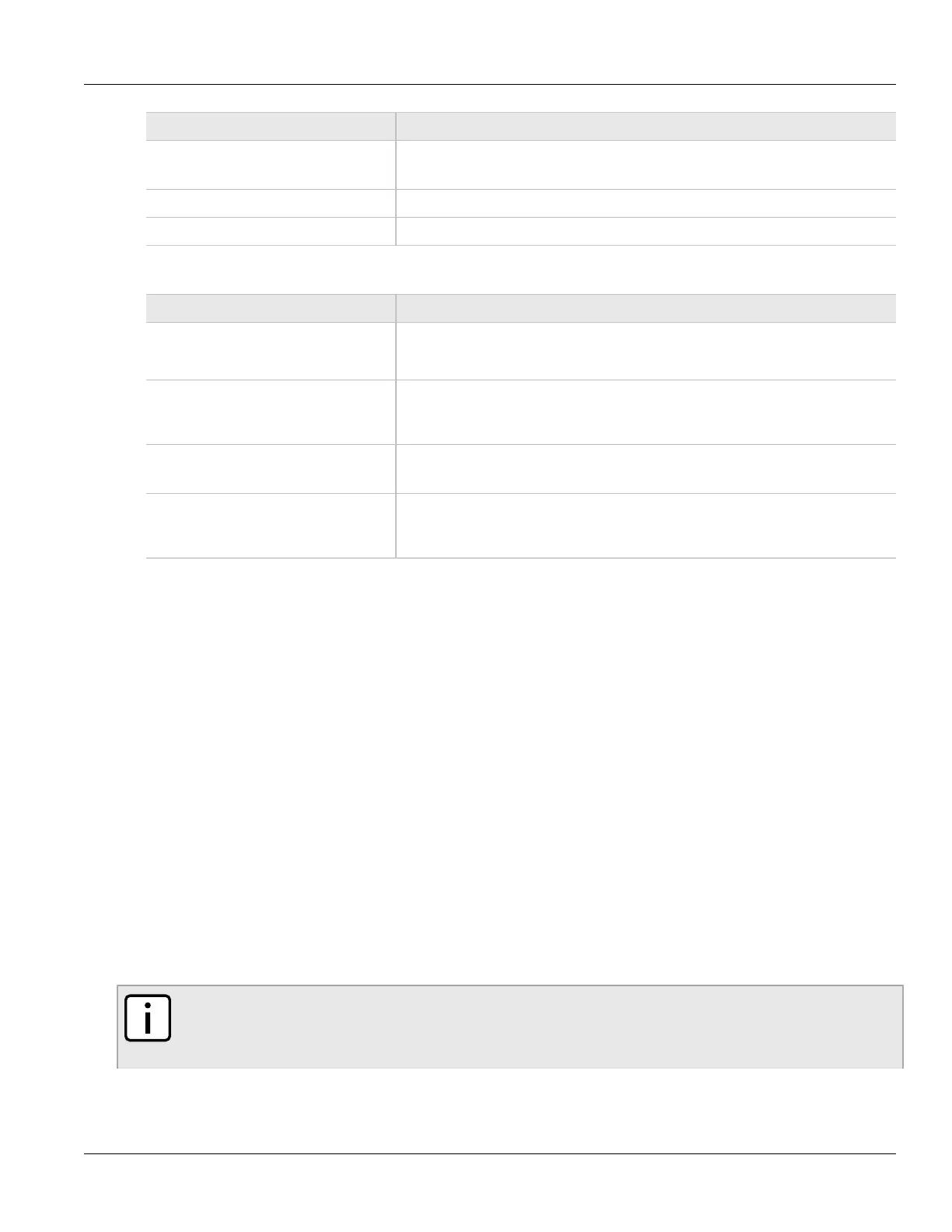